Heart of Africa Burundian Coffee | small and beautiful inland produced world-famous washed coffee
Professional coffee knowledge exchange more coffee bean information please follow the coffee workshop (Wechat official account cafe_style)
Burundi Rutana
The Heart of Africa in Burundi
Country: Burundi Burundi
Producing area: Rutana, town of Reuters
Altitude: 1400-1700 m
Treatment method: washing
Variety: bourbon species
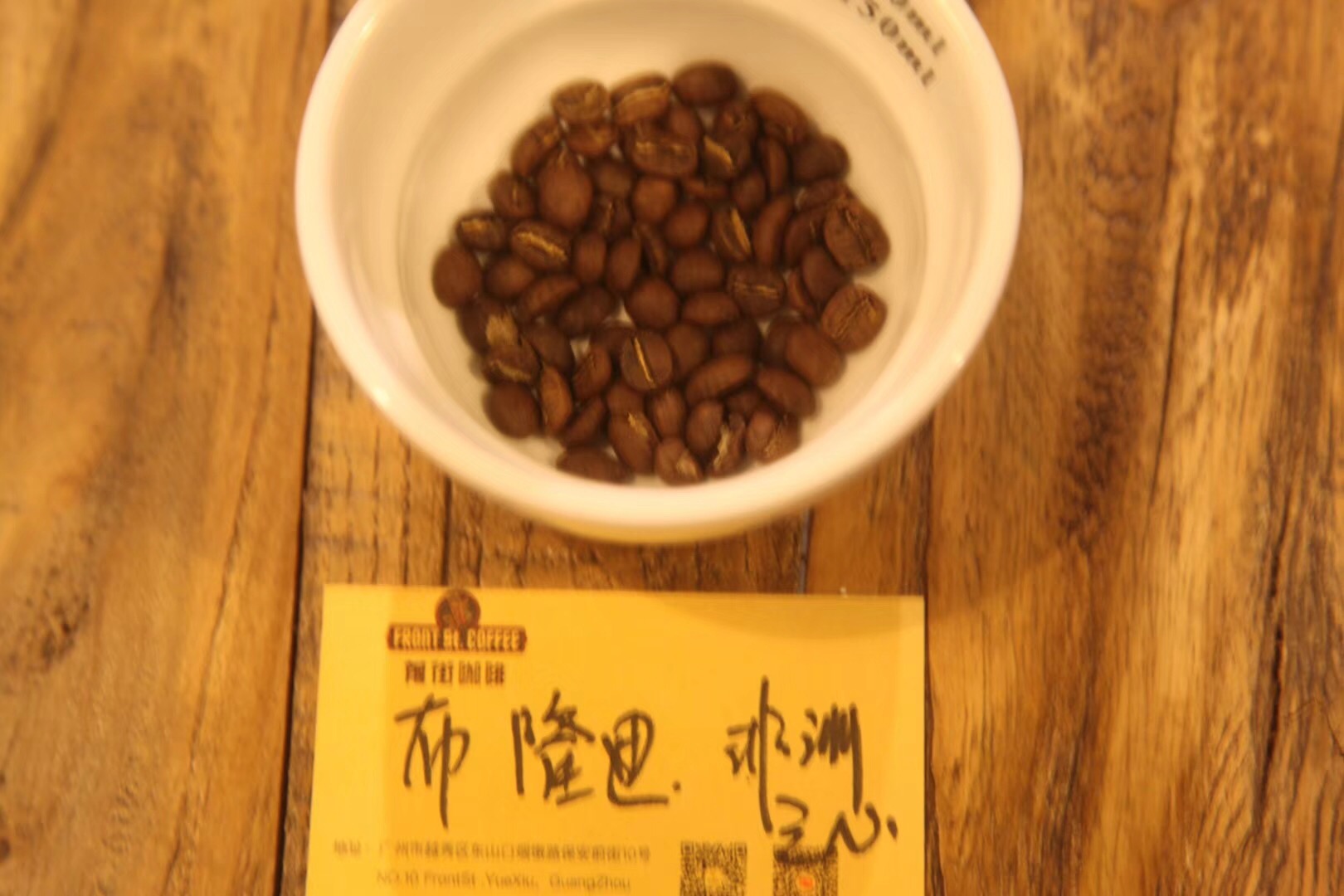
| 01 | production area profile |
Burundi
Burundi
Burundi, the heart of Africa.
According to the statistics of the World Bank in 2011, about 600000-800000 families in Burundi depend on coffee for a living, and coffee is the core of Burundi.
Burundi is a very beautiful landlocked country, located on top of the steep East African Rift Valley, with complex topography. The magnificent ridge on the east bank of Lake Tanganyike is a watershed between the Nile River system and the Congo River system of Africa's two major rivers, known as the "Heart of Africa." The "Heart of Africa" in Burundi was introduced by the Belgians. Bloomberg began to grow coffee in 1930. The varieties are mostly bourbon varieties like neighboring Luanda. Coffee grows on mountains ranging from 1750 to 2000 meters above sea level.
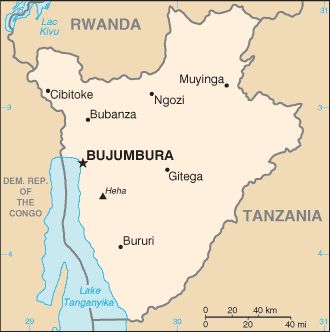
The first Arabica coffee tree in Bloomberg was introduced from Belgium in the 1930s. Today, more than 800000 of Bloomberg families depend on coffee cultivation for a living, mostly in small-scale coffee plantations, planted at intervals from other crops, artificially planted, and without mechanized equipment. Most of the varieties of coffee trees are Bourbon and Jackson and Mibirigy, which also belong to the Bourbon system, and the treatment methods are water washing and semi-washing. In the past, it was mostly exported to Belgium, Germany, the Netherlands, Japan, Australia and the United States.
Coffee export is already an important economic source of Bloomberg. Burundian coffee mainly comes from the following five major producing areas, including Kayanza, Ngozi, Mumirwa, Buyenzi, Kirimiro and other well-known coffee producing areas. The pattern of coffee production in Burundi (Burundi) "Heart of Africa" Bloomberg is similar to that in Ethiopia, with the majority of smallholder production, and the farmers of the Niarunashi Cooperative (Nyarunasi Cooperative) send their harvested ripe berries to the treatment plant for unified treatment.
Although there are other small producing areas, these areas are the most famous for their coffee.
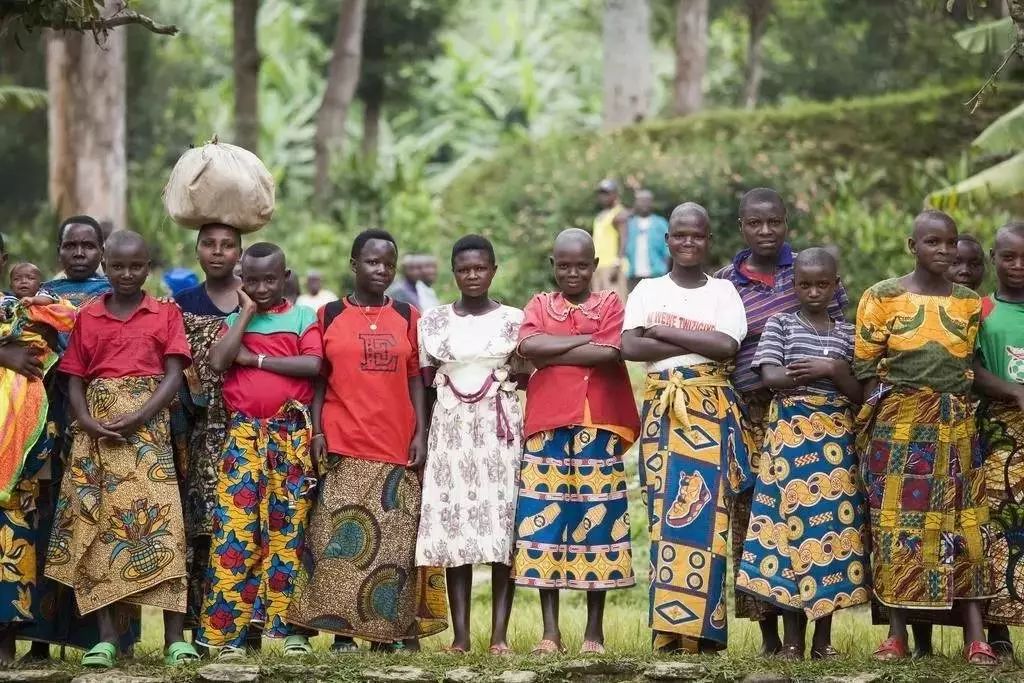
Buyenzi
The largest coffee producing area in the country, bordering Rwanda. Two specific areas, Cayanza Kayanza and Nogoz Ngozi, are the most famous.
The climate in the Cayanza area is extremely mild, with an average temperature of 18 °C, and most small farm estates are located between 1700 and 2000 meters, with the dry season in summer. Coffee from Cayanza scored a high score of 91.09 in the 2015 COE competition.
Nuoguoz is located in the northeast of Burundi, which is similar to the elevation of Cayanza. Although its output is less than that of Cayanza, it has also shown great potential for quality in recent years. In the 2015 COE competition, its best batches scored 88.92%, while other batches from the region also scored more than 85%.
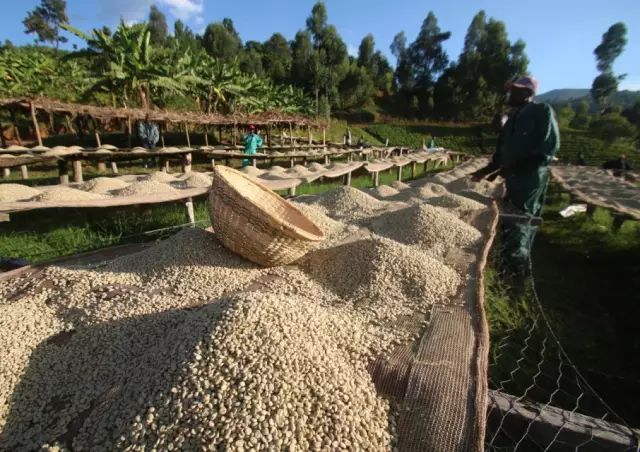
Coffee from Cayanza is drying in the sun.
Kirundo, Bugesera
In northeastern Burundi, the yield is low, but the development potential is good; at an altitude of about 1400-1700 meters, the best score for COE in this producing area is 86.62m.
Muyinga, Bweru
Another producing area in northeastern Burundi bordering Tanzania. The average elevation is 1800 meters above sea level and has its typical Burundian characteristics: mild climate, volcanic soil and high rainfall.
Gitega, Kirimiro
Located in the mountains of central Burundi, the average temperature is 12-18 °C. The annual rainfall is about 1100pp, which is lower than that in other producing areas.
In addition to COE award-winning coffee, this producing area also has a professional coffee laboratory that focuses on the quality control of exported coffee.
Bubanza, Mumirwa
Located in the north of Burundi, bordering Luwanda and the Democratic Republic of the Congo, 1100-2000 meters above sea level, the average temperature is 12-18 °C, and the annual rainfall is about 1100pp.
02 | processing method
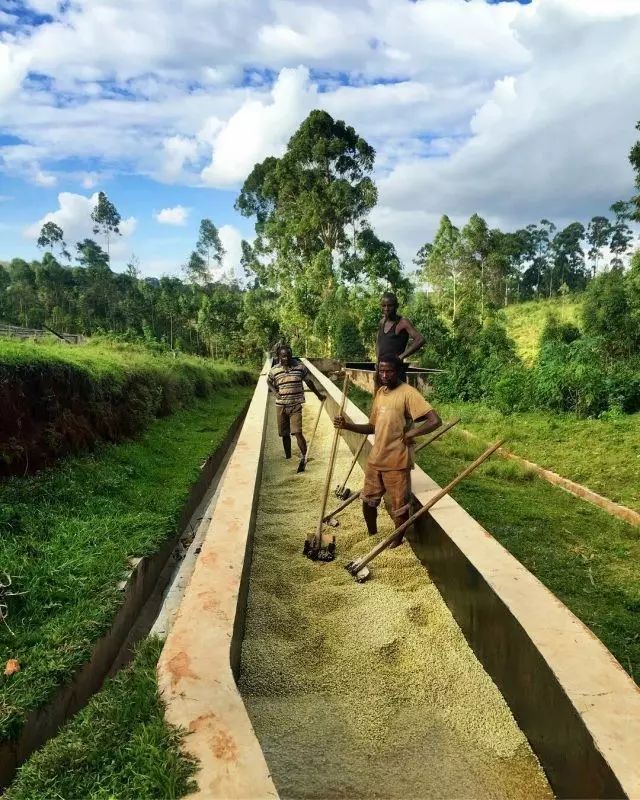
"Heart of Africa" in Burundi
In the origin of the town of Reuters, the coffee production pattern of Bloomberg is similar to that of Ethiopia, mainly from small farmers, and the ripe berries harvested by each are sent to the treatment plant for unified treatment. This batch of Reuters Town, a cooperative organized by small family-like coffee farmers, has a total of 539 small coffee farmers, of whom 148 are women. the average family grows 10,200 coffee trees (at least 1000 coffee trees per hectare), indicating its weak annual income and a typical poor small coffee farmer family.
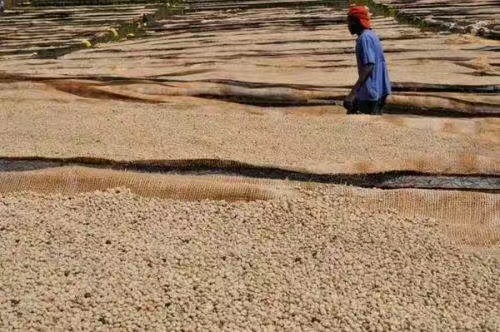
Coffee harvested by small farmers is washed with traditional water. The berries are shelled, soaked and washed in a sink, and then placed on a scaffolding to dry in the sun.
Like other East African countries, Burundian coffee has its own special treatment, that is, double washing (or double fermentation), and the coffee after such treatment will have an extremely grateful taste and bright flavor.
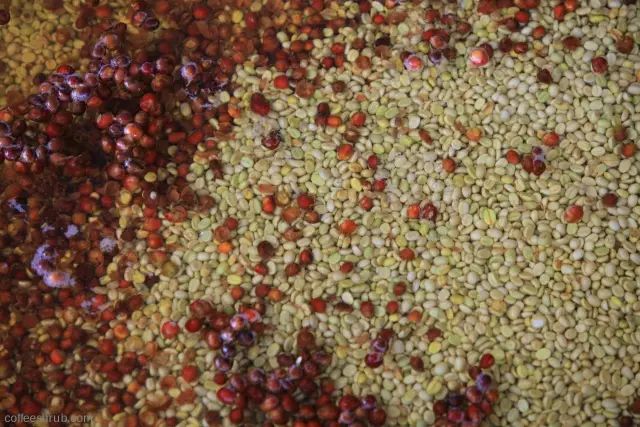
Washed coffee cherries
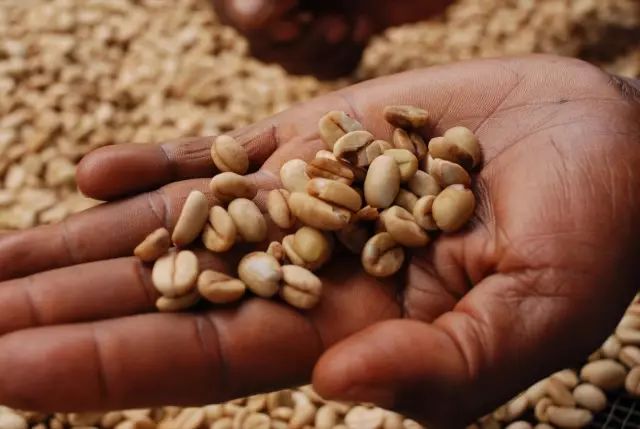
Coffee beans before shelling
Coffee beans are almost flawless, and the size and water content are quite even. after roasting with high maturity, the bean noodles show a very bright baking color, the taste is full of wild, and the strong flavor and aroma remain. The strong aroma is different from most high-quality and mild coffee on the market, and it has a very high evaluation in Europe. The dry aroma is very strong, which is no less than that of Kenya. when you enter the mouth, you can feel very full-bodied, like vanilla, a little wild, the coffee is full-bodied, the acidity is lower, the texture is slightly stronger than Kenya, and the finish is lighter than Kenya. it has the inherent characteristics of East African beans, but it is also quite unique.
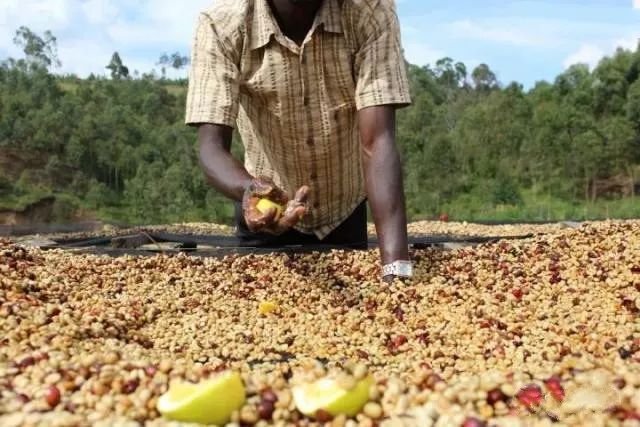
03 | Analysis of raw beans
Generally speaking, Burundian coffee is mainly bourbon, and there are other variants.
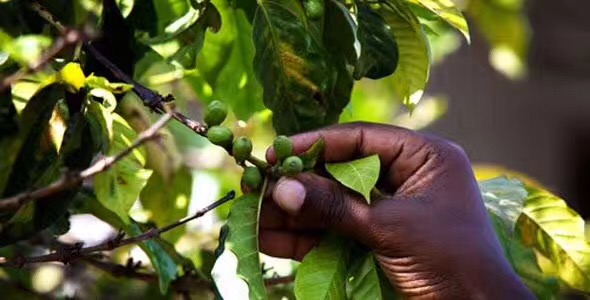
Its planting ranges from 700 to 2700 meters above sea level, which produces brighter acidity and lemon aromas, with passion fruit, pineapple, flower and honey flavors, with a quality of more than 86 points SCA, while low-altitude coffee has a thinner texture with more chocolate and hazelnut flavors.
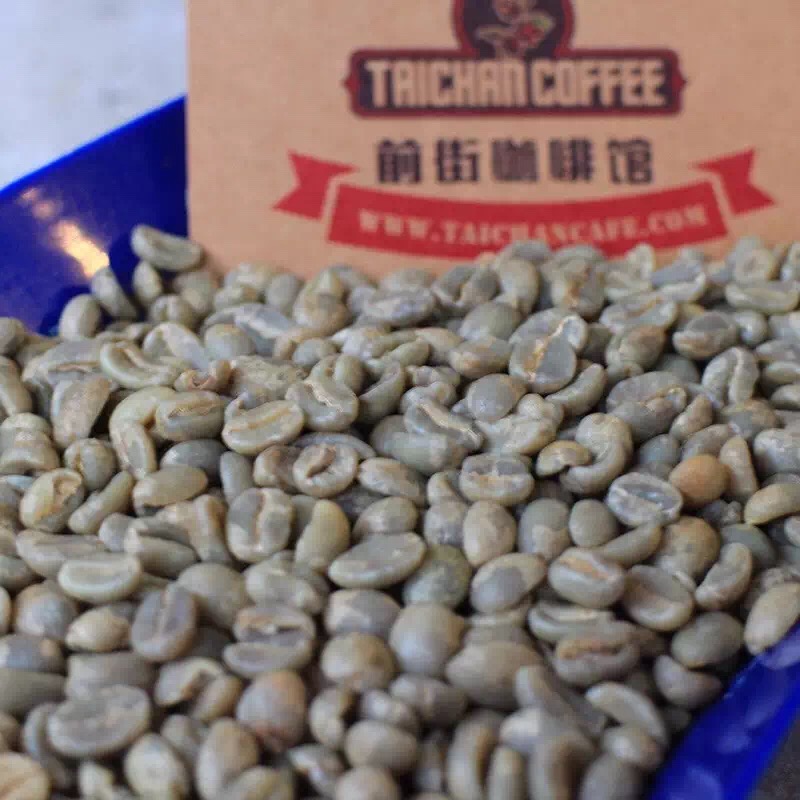
04 | Baking analysis
The density of raw beans is high, firepower adjustment should be especially careful, and fruit flavor and sweetness should be highlighted. If you choose moderate roasting, you can fully show the uniqueness of raw beans. After 1 minute, the initial firepower will be relatively large. Until the initial stage of dehydration, the firepower is adjusted early to make the taste and aroma of coffee uniform.
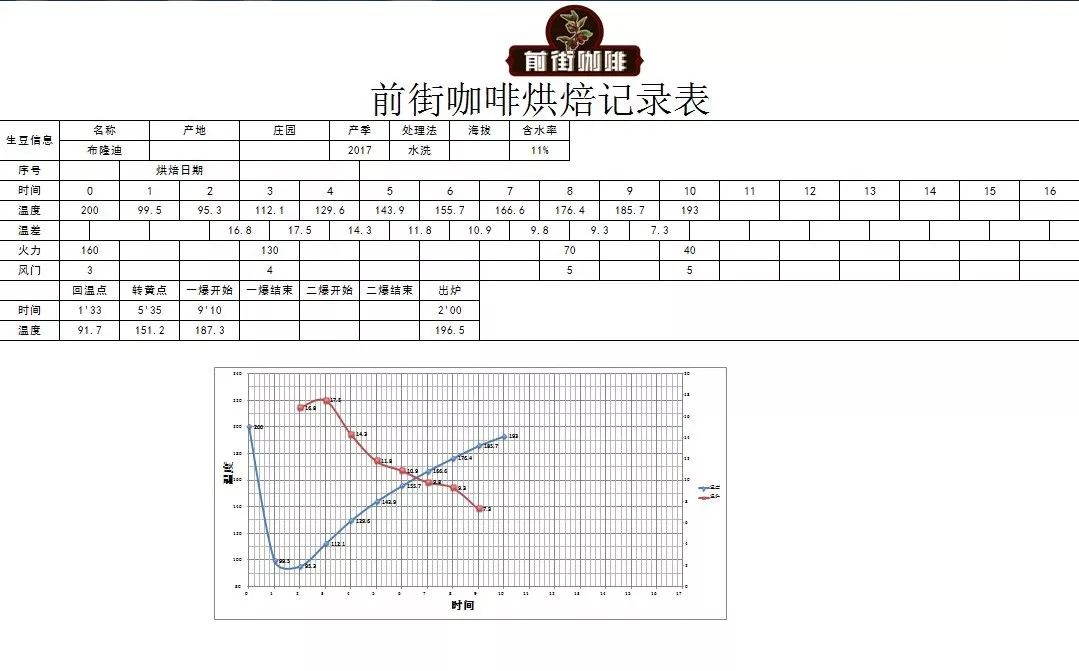
Yangjia 800N, raw bean 550g, specific operation:
Put the furnace temperature to 200 degrees Celsius, set the throttle to stew for 1 minute, adjust the firepower to 160 degrees, keep the throttle unchanged, adjust the firepower to 160 degrees, drop to 130 degrees, bake to 5: 35 ", the temperature is 152 degrees, the bean table turns yellow, the smell of grass disappears completely, dehydration is completed, throttle tune 4.
In the 9th minute, ugly Hu wrinkles and black markings appear on the bean table, and the smell of toast obviously changes to the smell of coffee, which can be defined as a prelude to an explosion. at this time, listen clearly to the sound of an explosion point, to 9: 10 "to start an explosion, the small firepower remains the same. The throttle is fully open at 5 degrees (the firepower should not be so careful that there is no cracking sound) 40 degrees, 196.5 degrees into the pot.
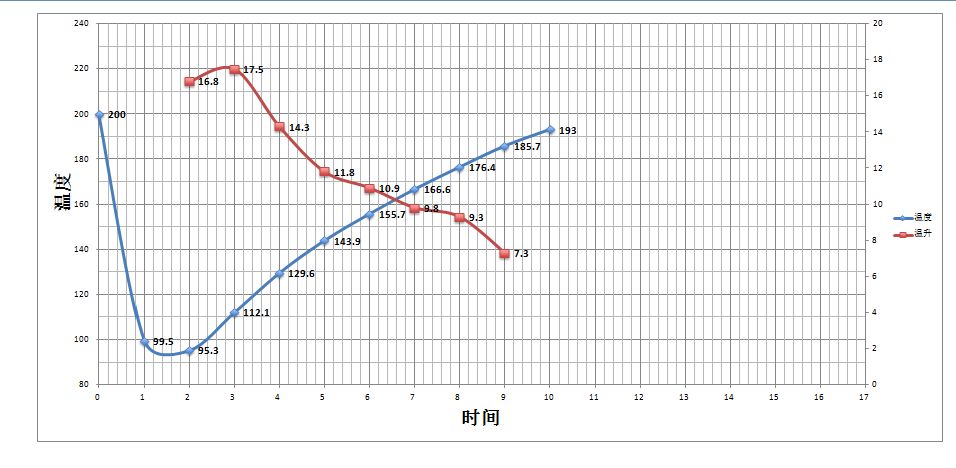
The taste of cup test
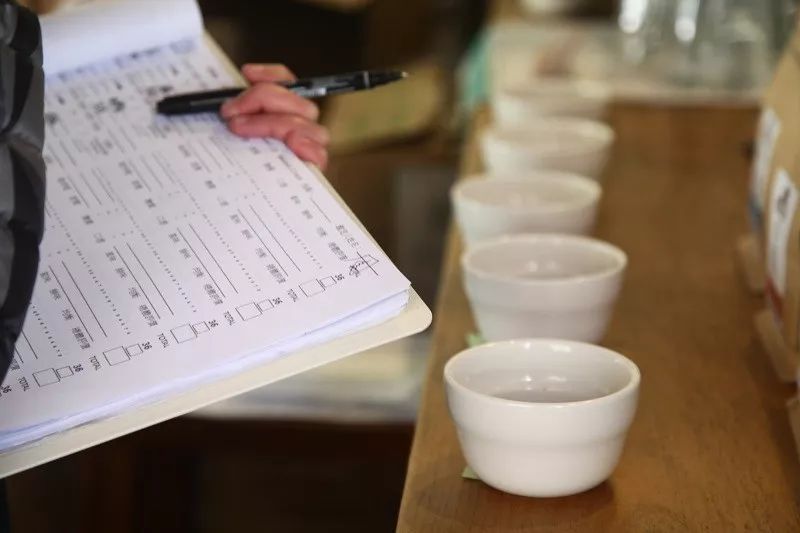
Dry aroma is very strong, not inferior to Kenya, citrus, cream, caramel
When you enter the mouth, you can feel very full-bodied, like vanilla, a little taste of straw, a little wild feeling, lower acidity than Kenya, slightly thicker texture than Kenya, and a lighter finish, with the inherent characteristics of East African beans, but also quite unique.
Flavor features: Brin, kumquat, lemon, dried fruit, caramel, light acidity, smooth taste, saturated aroma, rich and lasting finish.
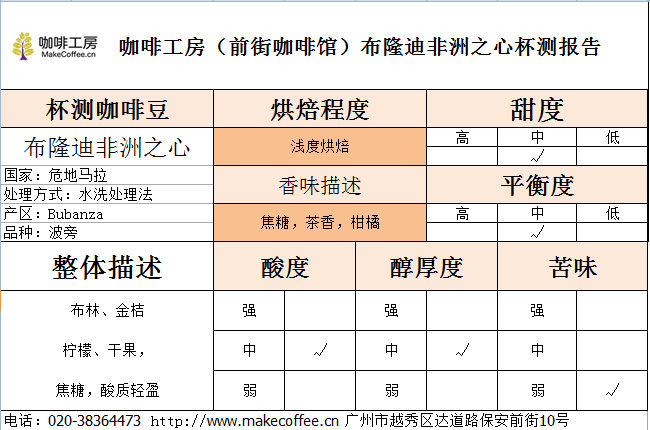
04 | Cooking analysis
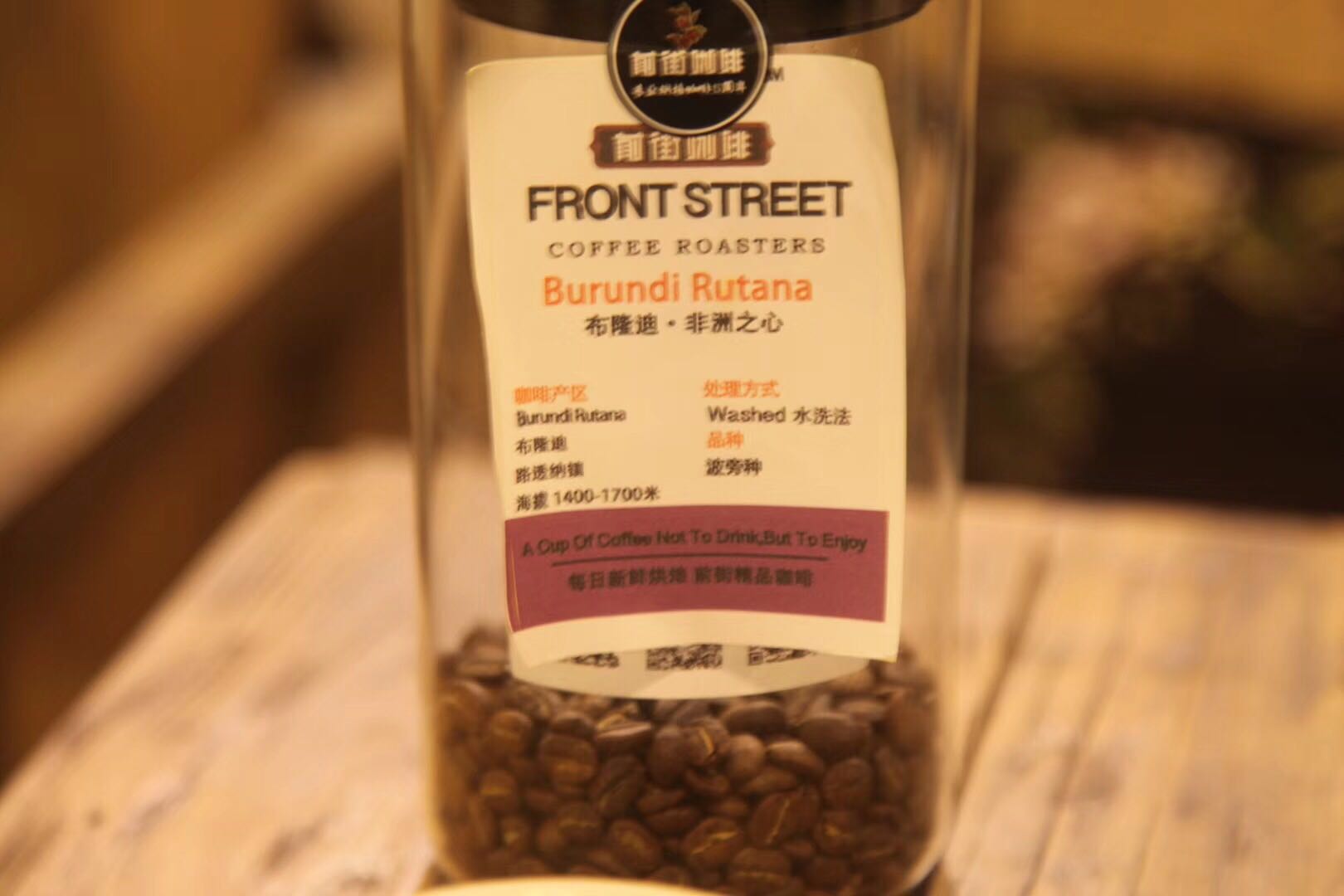
Hand punch reference
Stew with V60 filter cup, 15g powder and 30g water for 35 seconds

89-90 degrees water temperature extraction, 1:15, medium and fine grinding of small Fuji 4
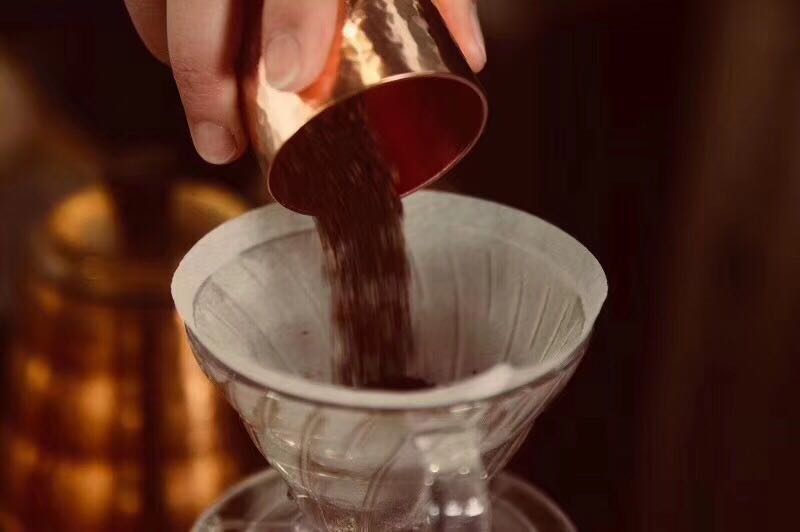
The second time water injection to 140ml cut off water, wait for the water to drop and then slowly inject water
The speed is uniform and the water level should not be too high
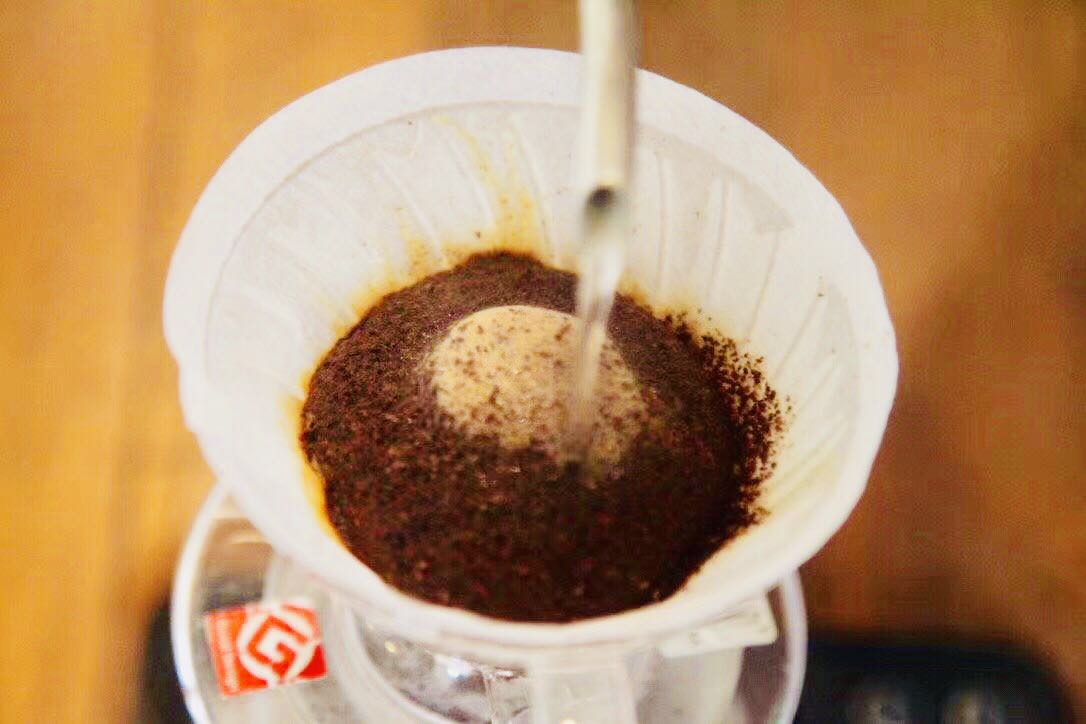
Water injection again until 225ml stops, extraction time 2:15 seconds ~
Quickly bring out the attractive aroma of citrus when brewing, and feel the feeling of citrus black tea after the entrance.
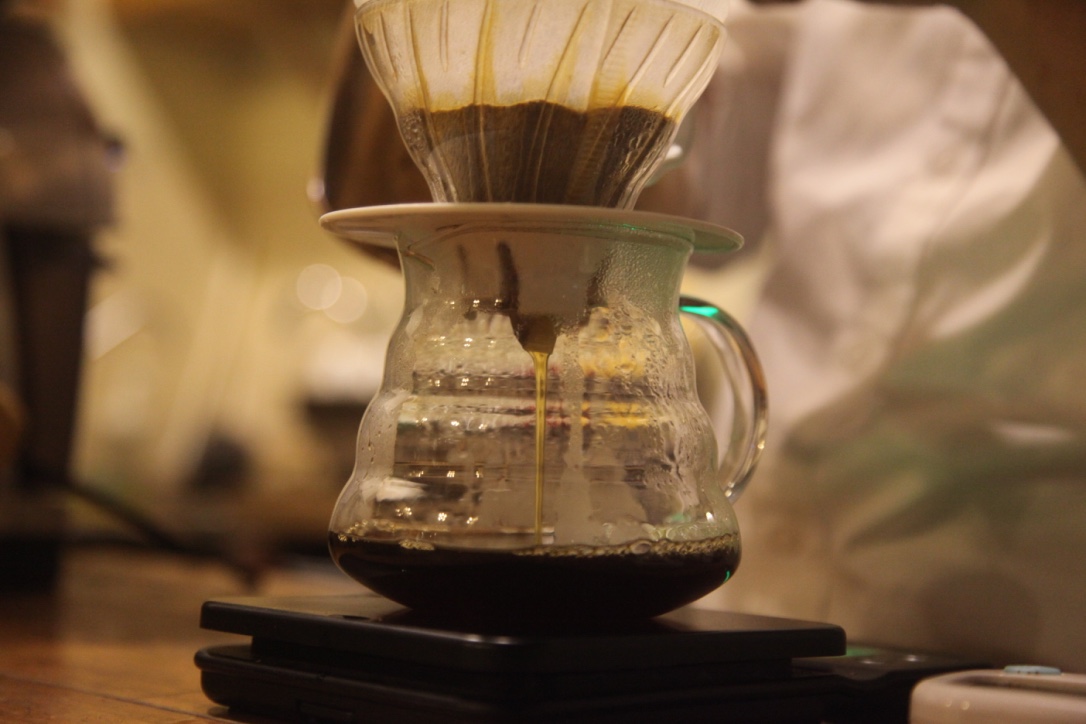
Burundian Burundi Heart of Africa washing bourbon single boutique coffee
Purchase link: https://item.taobao.com/item.htm?spm=a1z10.5-c-s.w4002-15673140460.41.78bb26db10CrHp&id=532974896074
Important Notice :
前街咖啡 FrontStreet Coffee has moved to new addredd:
FrontStreet Coffee Address: 315,Donghua East Road,GuangZhou
Tel:020 38364473
- Prev

The mocha pot of coffee? Do you want mocha coffee to be made in a mocha pot? Hot mocha coffee with milk
Professional coffee knowledge exchange more coffee bean information please follow the coffee workshop (Wechat official account cafe_style) mocha pot coffee practice? Do you want mocha coffee to be made in a mocha pot? Would you like your hot mocha coffee with cream? What are the practices and techniques of mocha pot coffee? Using the vapor pressure of boiling hot water to extract coffee close to the flavor of espresso, it is straight from Italy.
- Next
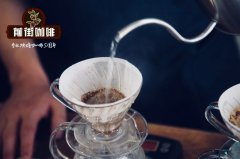
Six tips to make mocha pot coffee taste better? How do you make mocha pot coffee? The wind of mocha coffee
Professional coffee knowledge exchange more coffee bean information please follow the coffee workshop (Wechat official account cafe_style) to make mocha pot coffee better 6 tips? How do you make mocha pot coffee? What is the flavor and characteristics of mocha coffee? Mocha coffee is one of the oldest coffee, its history can be traced back to the origin of coffee. It is made of espresso, chocolate sauce and fresh milk.
Related
- Detailed explanation of Jadeite planting Land in Panamanian Jadeite Manor introduction to the grading system of Jadeite competitive bidding, Red bid, Green bid and Rose Summer
- Story of Coffee planting in Brenka region of Costa Rica Stonehenge Manor anaerobic heavy honey treatment of flavor mouth
- What's on the barrel of Blue Mountain Coffee beans?
- Can American coffee also pull flowers? How to use hot American style to pull out a good-looking pattern?
- Can you make a cold extract with coffee beans? What is the right proportion for cold-extracted coffee formula?
- Indonesian PWN Gold Mandrine Coffee Origin Features Flavor How to Chong? Mandolin coffee is American.
- A brief introduction to the flavor characteristics of Brazilian yellow bourbon coffee beans
- What is the effect of different water quality on the flavor of cold-extracted coffee? What kind of water is best for brewing coffee?
- Why do you think of Rose Summer whenever you mention Panamanian coffee?
- Introduction to the characteristics of authentic blue mountain coffee bean producing areas? What is the CIB Coffee Authority in Jamaica?

